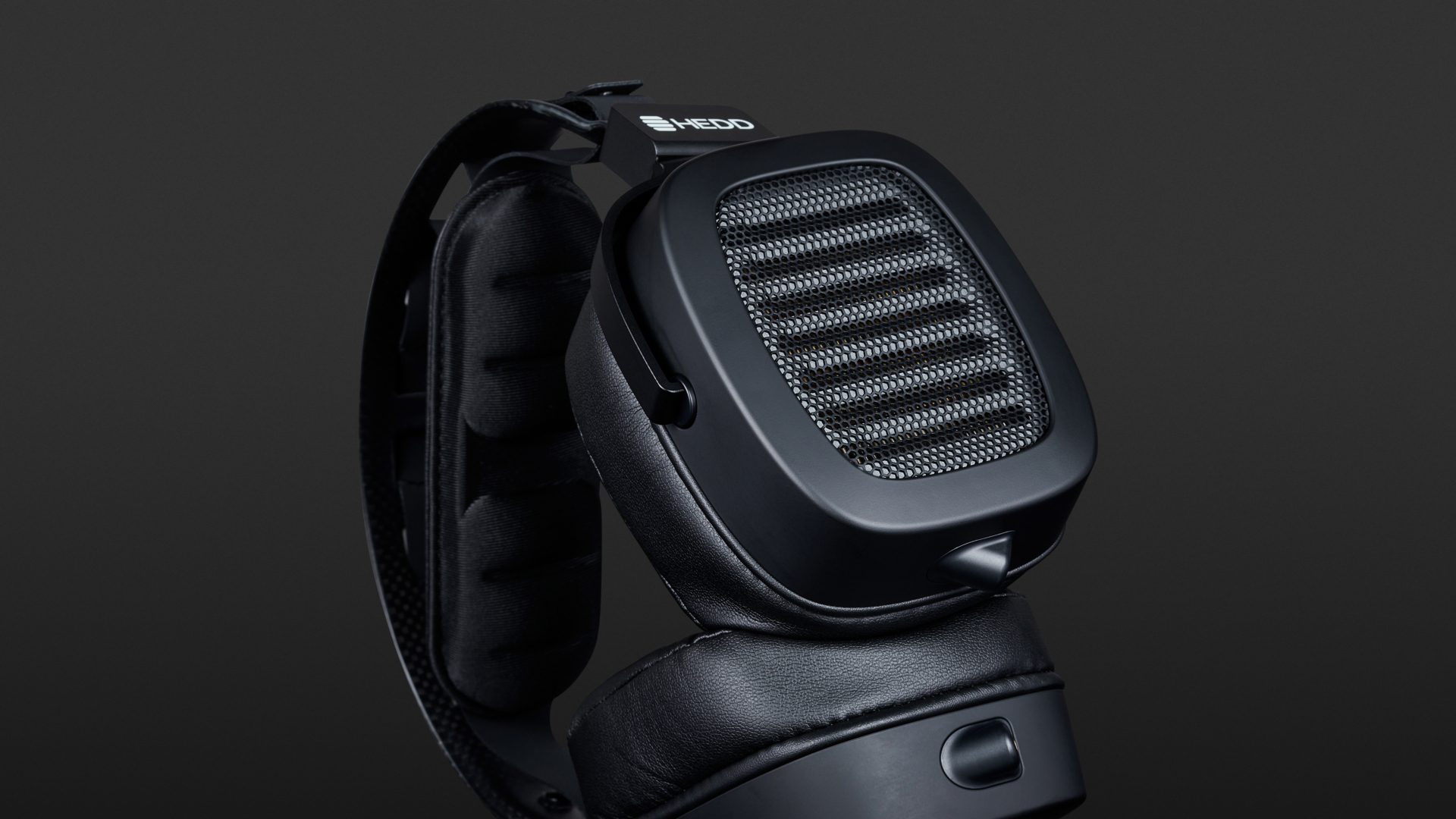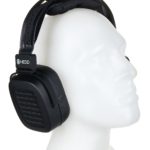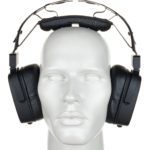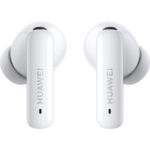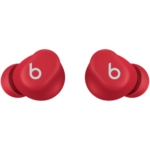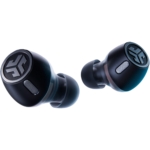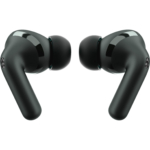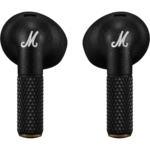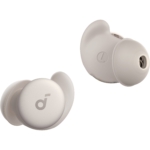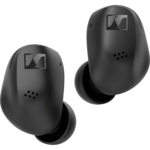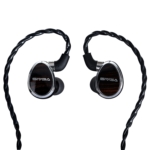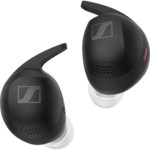With the HEDDphone 2, Berlin-based manufacturer HEDD continue to target audiophile music lovers as well as the professional audio sector who need headphones for stationary use. At the heart of the design, which has been externally and technically optimised as well as reduced in weight, is the company’s own full-range driver, the Air Motion Transformer, which ensures an outstandingly resolved sound image that has no rivals to shy away from. We highly recommend you test their sound.
- First-class resolution, spatiality and dynamics
- Independent adjustment of the contact pressure
- Comes with unbalanced and balanced cables
- 5 years warranty
- Bulky construction
- Reduced low bass level
- Higher retail price
The Berlin-based manufacturer HEDD, Heinz Electrodynamic Designs, specialise in active studio monitors and were set up in 2015 by the founder of Adam Audio Klaus Heinz and his son Dr Frederik Knop. The hallmark of all their previous developments has been the Air Motion Transformer (ART), which HEDD use for the high-frequency range. The principle of this unusual driver goes back to Oscar Heil, whose design Klaus Heinz has continuously developed over the decades.
From their debut with the HEDDphone in 2020, ART was used for the as a full-range driver in HEDD headphones. Three years later, I now have the pleasure of testing the second-generation device as a pre-production model.

With the HEDDphone 2, HEDD are still aiming at audiophile music lovers and used in the fields of professional production, mixing and mastering – which is where they also successfully supply monitors. The first version of the HEDDphone already received top marks from us – for the incredibly high-resolution sound. The only drawbacks were the rather clunky appearance and the weight.
These are precisely the points that the manufacturer has addressed with the new model: the HEDDphone 2 is more elegant and, at 500 grams, almost 200 grams lighter than its predecessor. I would describe the workmanship as high-quality, and this is something that the manufacturer confidently backs up with an exceptionally long warranty of five years.
Nevertheless, this model could also be described as large and heavy. This is due to the driver, where the output surface is fixed and which requires powerful magnets for operation. The replaceable ear pads made of artificial leather are also quite large. According to HEDD, the Air Motion Transformer, which is made of polyimide film (Kapton), has been improved, and the mechanical design has been completely revised. Thanks to these improvements the new version is more stable, and more elegant and also comes with a new double-guided headband (HEDDband), which can be adjusted independently of the carbon fibre bracket that holds the swivelling and tilting ear pads. This is supposed to make it possible to vary the fit and contact pressure of each part independently.
The device we tested did not yet have markings for left and right, but this will be available on the production model. In order to minimise structure-borne noise, the package includes woven, sheathed, balanced and unbalanced connection cables. These now have 3.5mm TRS jacks instead of mini-XLR plugs and are led out at an angle to the front. This looks unusual, but there is a reason for it: the cable should run along the upper body as much as possible and not bounce on the shoulders. Furthermore, a pair of replacement ear pads, a carrying case and two adapters are included.
In practice
Of course, this all means that the HEDDphone 2 is not a lightweight. The substantial padding makes for comfortable wearing and good external insulation. But there are also technical advantages. The size of the design is determined by the drivers and magnets. These drivers are the special feature of these headphones, which means that no compromises were made here. The angled installation of the drivers is another reason for the thickness of the padding, as it follows the wearer’s physiognomy and thus requires stronger ear pads at the back.
So, you should take the time to adjust the headband to get to the best possible wearing comfort.
You are currently viewing a placeholder content from YouTube. To access the actual content, click the button below. Please note that doing so will share data with third-party providers.
I found the contact pressure of the factory setting a little too firm, but I was able to reduce it so that the headphones were still comfortable for me to wear over longer periods of time, something that is indispensable, especially for professional use. In my case, however, there remained a slight feeling of pressure.
As expected, the HEDDphone 2 did not come close to the comfort of wearing a pair of Sennheiser HD 800 S. Another disadvantage: The synthetic leather pads increased perspiration in higher room temperatures. I was able to make a brief comparison between the old and the new model: apart from the improved aesthetics and the lower weight, I personally found the wearing comfort of the first version to be about the same.
By the way, as with the previous model, there were mechanical noises when you adjust the ear pads. They were caused by the ART foil and disappeared as soon as the right position was found.
The open design and the size of these headphones make the HEDDphone 2 a product for stationary use. The target market is professional sound engineers and demanding audiophile music listeners. Thus, the availability of a high-quality headphone amplifier, a DAP, the corresponding outputs of a mixing console or audio interface should also be taken into consideration. According to the manufacturer, 200 mW is the required output power and 1 W is recommended. However, unlike with competitors such as Stax, there is no need for a dedicated headphone amplifier.
Sound
Like its predecessor, the HEDDphone 2 created a wonderfully detailed sound image. At the same time, I generally found that I needed a reasonable level to enjoy the full sound. In my case, I used the DAP Shanling M3X with unbalanced outputs and the flexible headphone amplifier RME ADI-2 Pro FS as feeds. The HEDDphone 2 definitely benefits from a high-quality headphone amplifier.
One noticeable strength that I would like to point out was the fast response, the accompanying attention to detail and the reproduction of quiet signals and dynamic ranges. I often discovered elements of the mix that had previously remained hidden from me. These dynamics were also beneficial for spatial imaging: for example, the HEDDphone 2 reproduced Beethoven’s “Violin Concerto in D Major Op. 61”, performed by the Berlin Philharmonic under Herbert von Karajan, as a spatially staggered orchestra with intimate soloists that was not inferior to listening via a loudspeaker.
In the central midrange, the driver imbued acoustic instruments with authentic timbre and plasticity, and it gave voices wonderful resolution and intelligibility. At the same time, Whitney Houston’s honeyed voice on “Exhale” was embedded in a coherent artificial spatial effect. The late Roy Orbison’s recording of “The Comedians” was also impressive. Besides the intimacy of the performer’s unique voice, on the virtual stage, I heard the wide guitar with its slight tremolo effect and, set back, the marching snare drum. The percussive bass and strings completed this mix making it a very enjoyable listening experience.
Another fine exponent of the qualities of these headphones was the wonderful voice of Charley Pride. “Does My Ring Hurt Your Finger” showed the high quality of the 1967 recording in the remaster, on which the instruments are still strictly distributed between the stereo channels. When listening to Country music, the timing of the harmony voices could be tracked well, for example in “Spanish Is A Loving Tongue” by Emmylou Harris. Here, the HEDDphone 2 also excellently highlighted the strings and the accordion.
Rock also had the required punch, a selection of tracks by AC/DC and Alice in Chains had an excellently resolved sound image. On “Fire Your Guns”, the bass provided a rather wiry foundation. The rasp in Brian Johnson’s voice has rarely been more noticeable. “Check Your Brain” by Alice in Chains brought out a mix that was more punchy in the low-mid range.
For metal, clear differences could be discerned in the dense mixes of the test tracks by Meshuggah, Exodus and Slayer. Here, the HEDDphone 2 delivered a reproduction that switched distinctly between treble-emphasised, cool, and aggressive but less spiky, versus the mid-range thump of Slayer’s “Repentless”.
The Air Motion Transformer boasts a rather lean bass, especially in the low end. According to engineer Dmitry Grigoriev, this tuning was deliberately made to create sound compatibility with the in-house studio monitors. Linearity is offered up to 60 Hz, and the range below that drops by 3-4 dB up to 20 Hz. At the same time, the bass response depended strongly on the finish of the ear pads. These were less insulating in the HEDDphone 2 than in its predecessor and therefore resulted in a steeper drop. Furthermore, compared to the first model, the group delay and decay behaviour have been improved through optimisations to the driver and magnet system. This leads to a higher precision in the bass reproduction, which correspondingly also feels slimmer. Finally, according to HEDD, resonances between 500 and 2,000 Hz have been softened, which also provides order in the sound image.
Generally, the bass reproduction was tonal, dynamic and precisely traceable in its decay behaviour, for example with the different 808 bass drum hits in Adel Tawil’s “Katsching”. It was only in the low base that the HEDDphone 2 held back somewhat in terms of sound volume. The same applied to the deep drones on “Galleon Ship” by Nick Cave. But instead, fine recording details and eventual spaciousness suddenly revealed themselves alongside a palpably three-dimensional voice.
Last but not least, the treble resolution of the ART driver was simply sensational. Details and transients were reproduced with speed and precision. The multiple layered hi-hats and shakers in Yello’s “Pan Blue” could be perceived very well separately, while at the same time, the strikingly animated panorama was also impressively presented.
Happily, I didn’t detect any overemphasis, sharpness or harshness, unless these were part of the mix. However, neither was the HEDDphone 2 forgiving, as it certainly showed the edges of overemphasis when making an audio engineering assessment. While the exceptionally fast Air Motion Transformer could be a matter of taste in mixes, it quickly became a reliable acoustic magnifying glass, especially for editing work.
Conclusion
With the HEDDphone 2, HEDD Audio are aiming at professional and audiophile music listeners and sound creators who are explicitly seeking high-quality headphones for stationary use. The design featuring an AMT full-range driver has been optimised in numerous aspects compared to its predecessor. The main differences lie in the external appearance and reduced weight. Although the construction, due to the Air Motion Transformer, was still rather bulky, it was more practical.
Sound-wise, this second set of headphones from Heinz Electrodynamic Designs is just as impressive as their debut and even improves in precision, but it also costs 300 euros more. The result is simply an outstanding-sounding product. In the price range of two thousand euros, several aspects play a role. I think that HEDD hold their own among their competitors and this product is closer to the electro and magnetostats of Audeze or Dan Clark than to the dynamic designs of Focal and Sennheiser. Here, personal taste and listening tests will help you make the decision.
Technical specifications
- Ear couplingOver-ear
- Typeopen
- Transducer principleElectrodynamic
- Frequency response (headphones)10 - 40.000 Hz
- Impedance41 ohms
- Sound pressure level (SPL)89 dB
- Weight without cable550 g
What's in the box
- balanced connection cable (4.4 mm)
- unbalanced connection cable (6.3 mm)
- 2x replacement ear pads
- Connector 6.3 mm to 3.5 mm
- Connector 4,4 mm to XLR
- Carrying case










